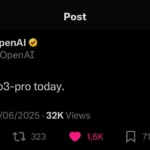Journalistic Errors, Fake News, and the Hidden Players Behind the Curtain
In today’s information jungle, truth is fragile. A single unchecked claim can turn into a wildfire, amplified by retweets, headlines, and algorithms. But what’s really behind fake news? And who’s accountable when the line between error and deceit fades?
A Wrong Report ≠ A Fake News Story
Not every inaccurate report is a malicious lie. Sometimes, the truth gets lost because of rushed deadlines, single-source reporting, or editorial oversight. But when these mistakes go uncorrected—or worse, unacknowledged—they feed a culture of suspicion and distortion.
Journalistic rigor is often the first victim of speed. And in a digital world where deleting an article leaves no trace, silence becomes complicity.
The Age of Infodemic
Welcome to the era of “more is less.” Media outlets race to publish, chasing clicks instead of accuracy. Reporters are pushed to produce quantity over quality. Advertisers reward content that stirs emotions, not minds. The most shared stories? Often the shallowest. It’s a vicious cycle where impact beats depth—and we, the audience, help fuel it.
Social Media and Algorithms: The New Gatekeepers
Today’s news cycle is fragmented. A TikTok clip, a tweet, or a meme can act as “sources.” Platforms prioritize virality over verification. Algorithms decide what you see—but on whose terms? And what about fact-checkers? Who audits them?
When journalism feeds off snippets and echo chambers, it loses its compass.
AI Is Not Neutral. And It Never Was.
Father Paolo Benanti—a Franciscan theologian and advisor to the UN and Pope Francis on AI ethics—recently made headlines in Corriere della Sera. His warning is clear:
“The link between AI and journalism is crucial. But if automation takes over, we risk losing the democratic function of the press.”
He outlined three urgent challenges:
Preserving journalism as a democratic safeguard, not just a content machine.
Making editorial work economically viable, in a market undercut by automation.
Assigning responsibility to digital giants, who act as publishers without liability.
And he added a fourth threat: anyone, anywhere, can now generate persuasive fake content in seconds.




